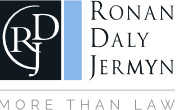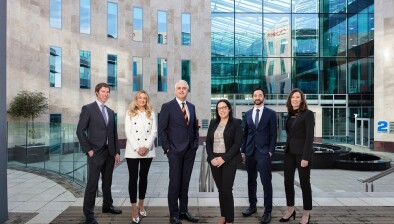Analysis: IP rights and artificial intelligence – the Printing Revolution meets Industry 4.0

Elena Vassileva
Elena Vassileva and Jemima Militti of Ronan Daly Jermyn discuss copyright and patent protection in relation to AI outputs and explore whether current IP rules are well suited to the world of AI.
We live in a world where technology enjoys exponential growth and limitless developments. Such technological advances are commonly fuelled by the ever-evolving phenomenon known as “Artificial Intelligence” (AI). AI is the engine giving life to the Fourth Industrial Revolution which has been described as “the blurring of boundaries between the physical, digital and biological worlds”. As with everything new in life that adds wealth and value, many seek to capitalise on this phenomenon. Intellectual Property (IP) intersects with AI in several ways, but it is questionable whether current IP rules are well suited to the world of AI.
IP and AI: different perspectives
Broadly speaking, IP comprises legal rights which result from intellectual activity in the literary, artistic, scientific, and industrial fields. Intellectual property law was conceived to give protection to the creators of intellectual goods and services by granting them rights to control (for a period limited in time) the use made of such goods and services. Therefore, traditionally, all forms of IP are human-centric.
AI has no one universal definition, however, the World Intellectual Property Organization accepts that AI is generally understood to be “a discipline of computer science that is aimed at developing machines and systems that can carry out tasks considered to require human intelligence”. Therefore, a technology is programmed using AI to mimic the human mind thereby producing an output which is similar to a creation of the human mind (IP-like). While IP relates to creations of the human mind, AI output relates to the creations of a machine’s “mind”. Inevitably, the issue arises as to whether AI output may be protected through the current human-centric principles governing IP.
IP principles, AI outputs
The main intellectual property rights (IPR) are patents (which protect inventions), copyright and related rights (which protect works of art), trademarks (which serve as a designation of origin and distinguish the goods and services of one person or entity from those of another), know-how (which protects trade secrets) and design rights (which protect the appearance or aesthetic characteristics of a product). The types of IP most relevant to this discussion are copyright and patents, however, the current rules applicable to them do not translate well to the AI world as they were conceived at a time when AI simply did not exist.
Copyright
Copyright law as we know it dates to the 18th century and its origins are linked to the necessity to protect the rights of publishers and authors following the invention of the printing press. The Copyright and Related Rights Act 2000 (CRRA) is the main legislation governing copyright in Ireland today.
Copyright and its related rights are the sum of economic (to have the economic benefit of the use of the work) and moral rights (such as paternity and integrity). They protect various works (as opposed to ideas) including literary and artistic works, digital publications, typographical arrangements, sound recordings and films. The default position under the CRRA is that the author (i.e. the creator) of the work is the first owner of the copyright in that work. The most important criterion for copyright protection is originality - to be protected, the work must be the author’s own intellectual creation, reflecting his or her personality (see Court of Justice of the European Union in Infopaq (C-5/08) and Painer (C-145/10)).
Section 21 of the CRRA outlines the various types of authors and notes that the author “in the case of a work that is computer generated, [is] the person by whom the arrangements necessary for the creation of the work are undertaken”.
Patents
The patent system protects inventions. To be eligible for patent protection, an invention must be new, involve an inventive step and be capable of industrial application. In Ireland, the main legislation governing patent protection is the Patents Act, 1992.
The default position under the PA is that the inventor (i.e. the actual deviser of the invention) has the right to a patent in the invention. The act of “devising” an invention is considered a human activity which necessitates contribution to the inventive concept. In this respect, the European Patents Office, in its decisions on the DABUS patent applications expressly noted that “no national law has been determined which would recognise [a machine] as an inventor”.
AI output
Broadly speaking, AI’s work follows three basic stages:
- The AI input (what the creator of AI puts into the AI technology),
- The AI process (what the AI technology does when it receives the AI input); and
- The AI output (the creation made by the AI technology).
AI input can be in the form of data sets, algorithms, mathematical models, scientific principles etc. Some of these are protectable by current IPR and some are not. For example, mathematical models and algorithms are not patentable under EU law but copyright protection is available for code written by a programmer. Therefore, AI input fits neatly into traditional concepts of authorship and creativity and is capable of protection by existing types of IP. Such protection is linked, however, to the individual creating the input.
The AI process and AI output stages are where the application of existing forms of IP begins to labour because, while during the AI input phase the programmer or engineer may have set certain parameters within which the AI is to operate, during the AI process, the AI makes independent decisions ultimately arriving at the AI output.
Because any AI output thus created by the AI is independent of the thought process of the person who created the AI, even if the AI process and AI output meet all other criteria for copyright protection or patentability or other existing forms of IP, they do not meet the criteria for authorship (in the case of copyright) or inventorship (in the case of patents), which are human-centric.
Further, as AI itself is neither a natural person nor a body corporate, AI’s ownership of its own output raises the difficult question of “personhood”. In this respect, the European Patents Office, in its decisions on the DABUS patent applications stated that AI has no rights as they have no legal personality comparable to a natural or a legal person and that “there is no legislation or jurisprudence establishing such legal fiction”.
Conclusion
IP is a set of rights which grant legal protection based on the concept of the human creator or deviser and the rules governing IP have been created to incentivise human innovation. Thus, the fundamental difference and unavoidable issues with seeking to obtain IP protection for AI output is that AI output is not a human creation.
Its creator, the AI technology, does not possess legal personality as a natural person or body corporate; and it cannot be said that AI needs any legal incentive to create, as it is a purpose-built technology. Therefore, for AI processes and/or outputs to be granted IP protection, fundamental legal concepts would need to be reimagined through radical legal reform.
Alternatively, it is possible that a new system of sui generis rights may be introduced to offer legal protection akin to IP to AI processes and AI outputs, but this will not be without its challenges as many ethical and even philosophical questions arise in the context of intelligent machines, their autonomy and accountability in the case of wrongdoings.

Elena Vassileva is a senior associate and Jemima Militti is an intern, both at Ronan Daly Jermyn.







